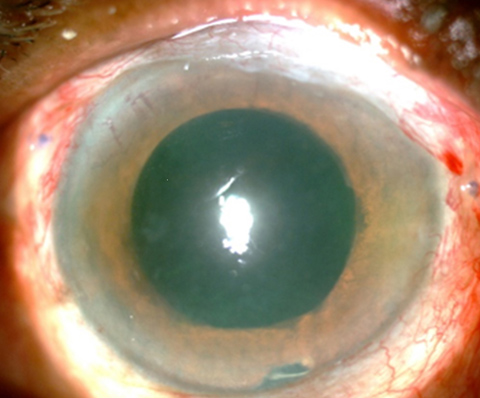Unmasking silicone oil in the anterior chamber
Main Article Content
Abstract
A 77-year-old man with aphakia presented at L V Prasad Eye Institute with sudden pain and high intraocular pressure. Examination revealed silicone oil in the anterior chamber (AC). He had preciously undergone vitreoretinal surgery for rhegmatogenous retinal detachment, with use of a silicone oil tamponade. He also had an inferior peripheral iridectomy (PI). Typically, silicone oil remains in the posterior chamber of aphakic eyes in a spherical form and does not enter the AC. However, in the presence of pupillary block, aqueous accumulates in the lower part of the posterior chamber, increasing pressure and forcing the silicone oil through the pupil into the AC, potentially obstructing outflow from the angles. This condition is often clinically missed because of a deep AC and iridectomy appearing as patent on retroillumination, lacking typical signs of pupillary block, such as iris bombe and shallow AC. The presence of oil in the AC is identified by stagnant cells that would otherwise circulate with aqueous convection currents. The shining reflex on the iris due to oil (A, black arrow) and a thin fibrin layer on the peripheral iridectomy, causing the blockage, helped in identifying the oil in this case. Reopening the iridectomy with Nd:Yag laser allowed aqueous to flow into the AC, with silicone oil retreating into the posterior chamber (B-C), gradually evacuating the silicone oil from the anterior chamber (D).
Downloads
Article Details

This work is licensed under a Creative Commons Attribution-NonCommercial-NoDerivatives 4.0 International License.
References
-
